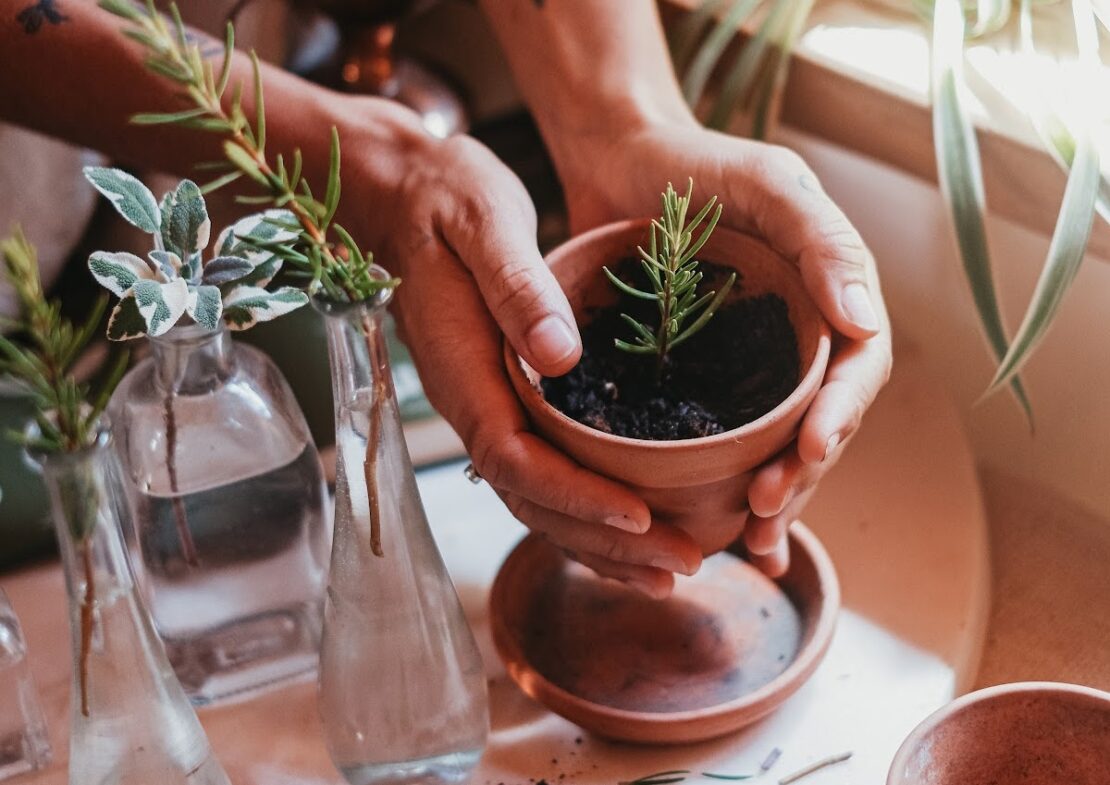
How to Propagate Herbs From Cuttings
When it comes to multiplying your beloved herbs, growing new plants from seeds you’ve collected is the easiest and most practical option. But there are other ways to propagate herbs using your already-established plants.
Your herb garden is in full swing, your potted botanicals an abundant source of joy, making their way into your apothecary as you further your herbal studies, and now you may find yourself thinking about how to grow more of the herbs with which you have an affinity. After all, the only thing better than one herb is two herbs!
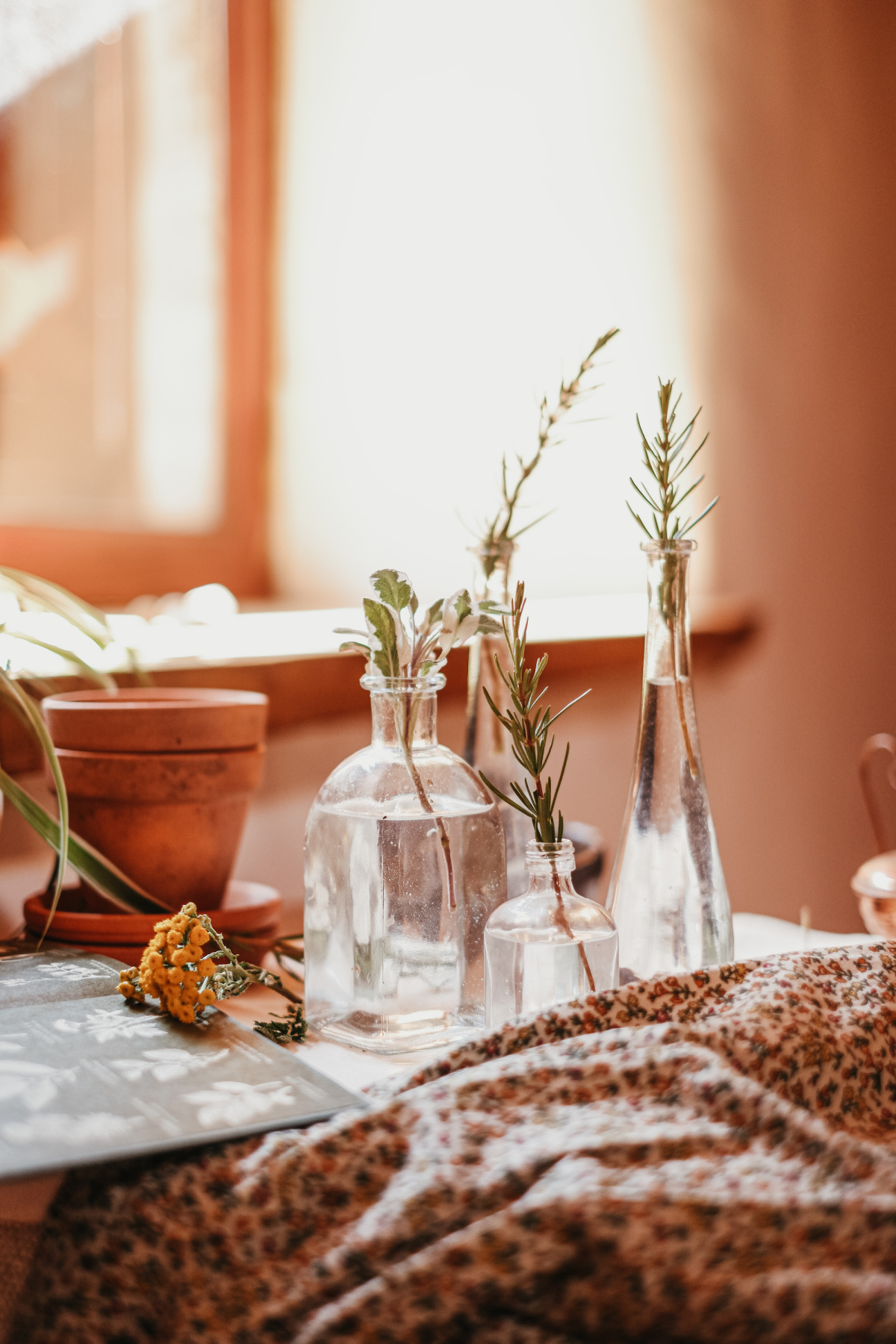
Alternative Methods of Propagating Herbs
You may want to look into these alternative methods when you want to propagate herbs that require a long time (sometimes years) to reach the flowering period. Alternative methods are also useful for plants which have seeds that are difficult to germinate, like lavender (Lavandula spp.), or that don’t produce seeds at all, like horsetail (Equisetum arvense) (Titchmarsh, 1981).
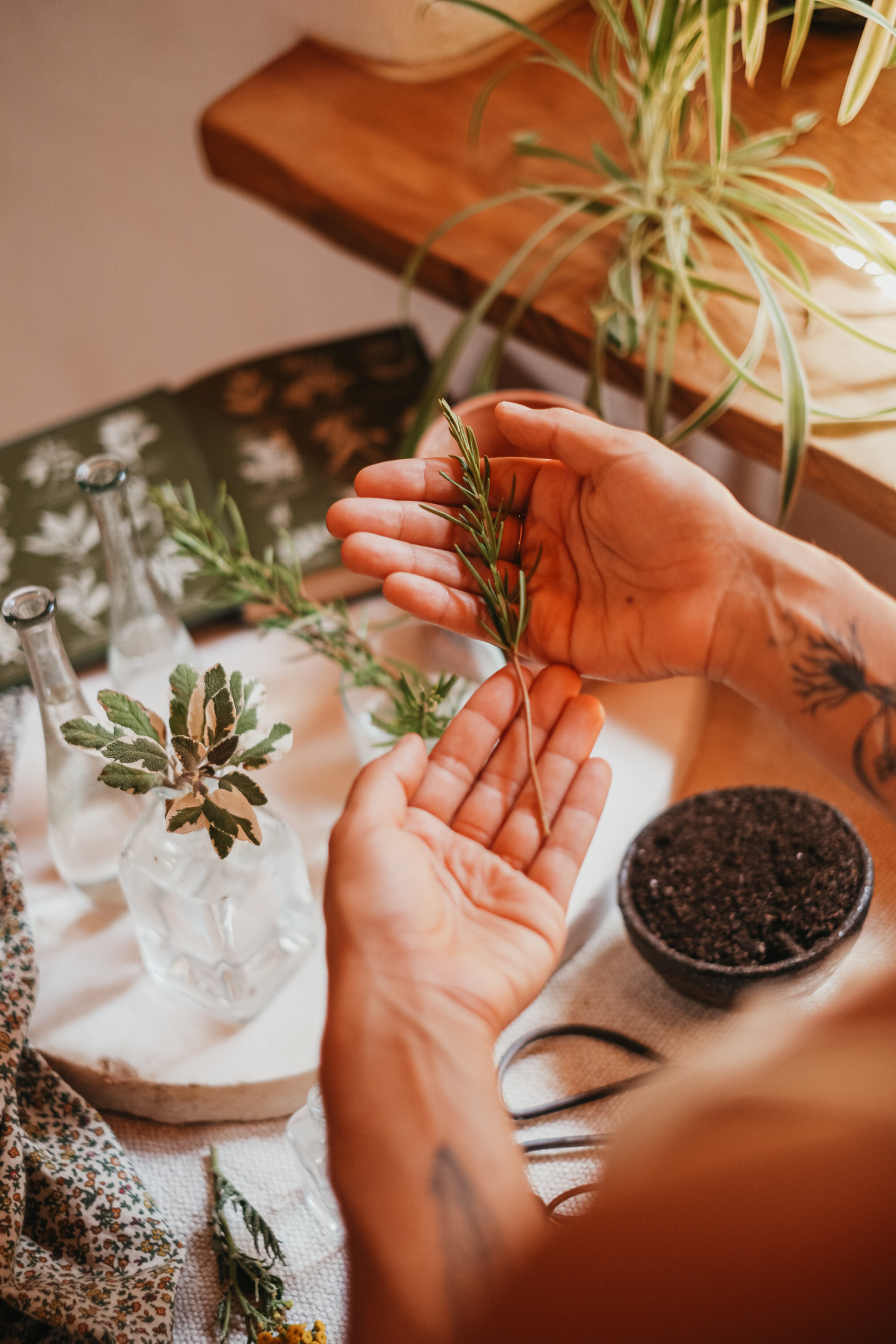
Using Plant Cuttings: Additional Insights
Different propagation methods work for different plant parts, depending on each species’ characteristics. Propagation can be done using roots, stems, or even leaves from the plant.
In this post, we’ll look into one of the most common of these methods—propagation from plant cuttings using stems. This is a very successful technique for plants with herbaceous to woody stems, including culinary herbs such as rosemary (Salvia rosmarinus), thyme (Thymus vulgaris), sage (Salvia officinalis), lavender (Lavandula spp.), and various mints (Mentha spp.), just to name a few. Propagating from cuttings creates a new plant that is genetically identical to its parent plant. Although the process is similar for herbaceous to semi-woody or woody stems, these procedures are practiced at different times of the year (McVicar, 2002).
During spring, use this method of propagation for plants with herbaceous stems, such as anise hyssop (Agastache foeniculum), tarragon (Artemisia dracunculus), Roman chamomile (Chamaemelum nobile), lemon balm (Melissa officinalis), and oregano (Origanum vulgare).
During summer and early autumn, propagate semi-woody plants from cuttings, such as lemon verbena (Aloysia triphylla), lavender (Lavandula spp.), rosemary (Salvia rosmarinus), and sage (Salvia officinalis).
During autumn, you can use this technique to propagate shrubby plants and small trees with woody stems, such as elder (Sambucus nigra), ginkgo (Ginkgo biloba), and juniper (Juniperus communis).
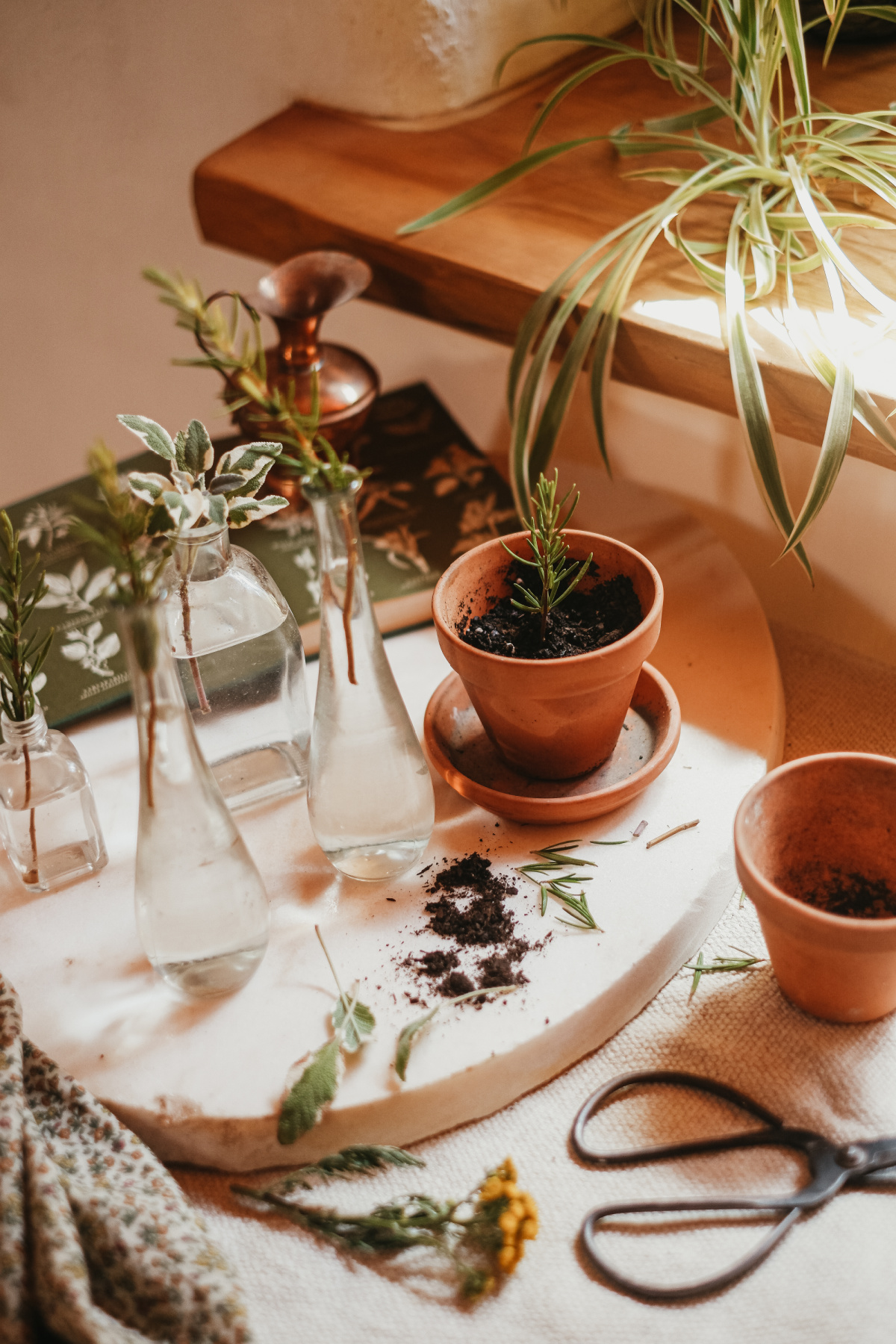
A well-established healthy herb Now, you have two options:
Option 1:
Option 2:
How to Propagate Herbs Using Cuttings: Step-by-Step Instructions
Are you ready to start propagating your favorite herbs? Let’s do this! Here’s how to propagate herbs using plant stems. Refer to the above guidelines as to which season is best for different types of herbs, depending on their stem type.
Sharp scissors
Sharp knife
Rooting hormone (optional)
Soil-less potting mix
A seedling tray or pots, one pot per new plant
Plant sprayer and water
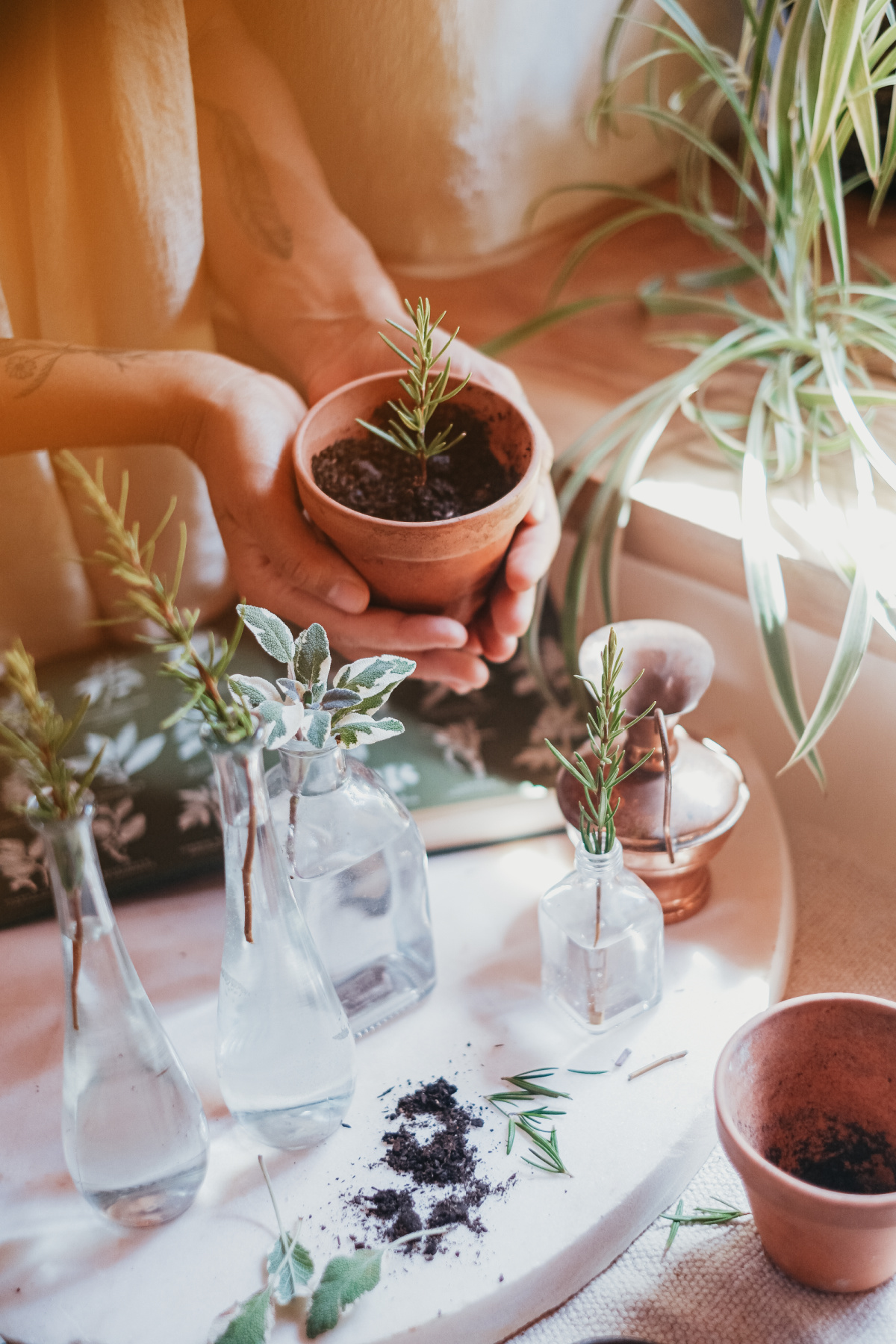
In Closing,
Propagating your established herbs from cuttings is an easy and accessible way of (quite literally!) multiplying your herb garden throughout the seasons. It is also a delightful way to deepen the bonds you have with your plants by observing the rooting process and being supportive along the way.
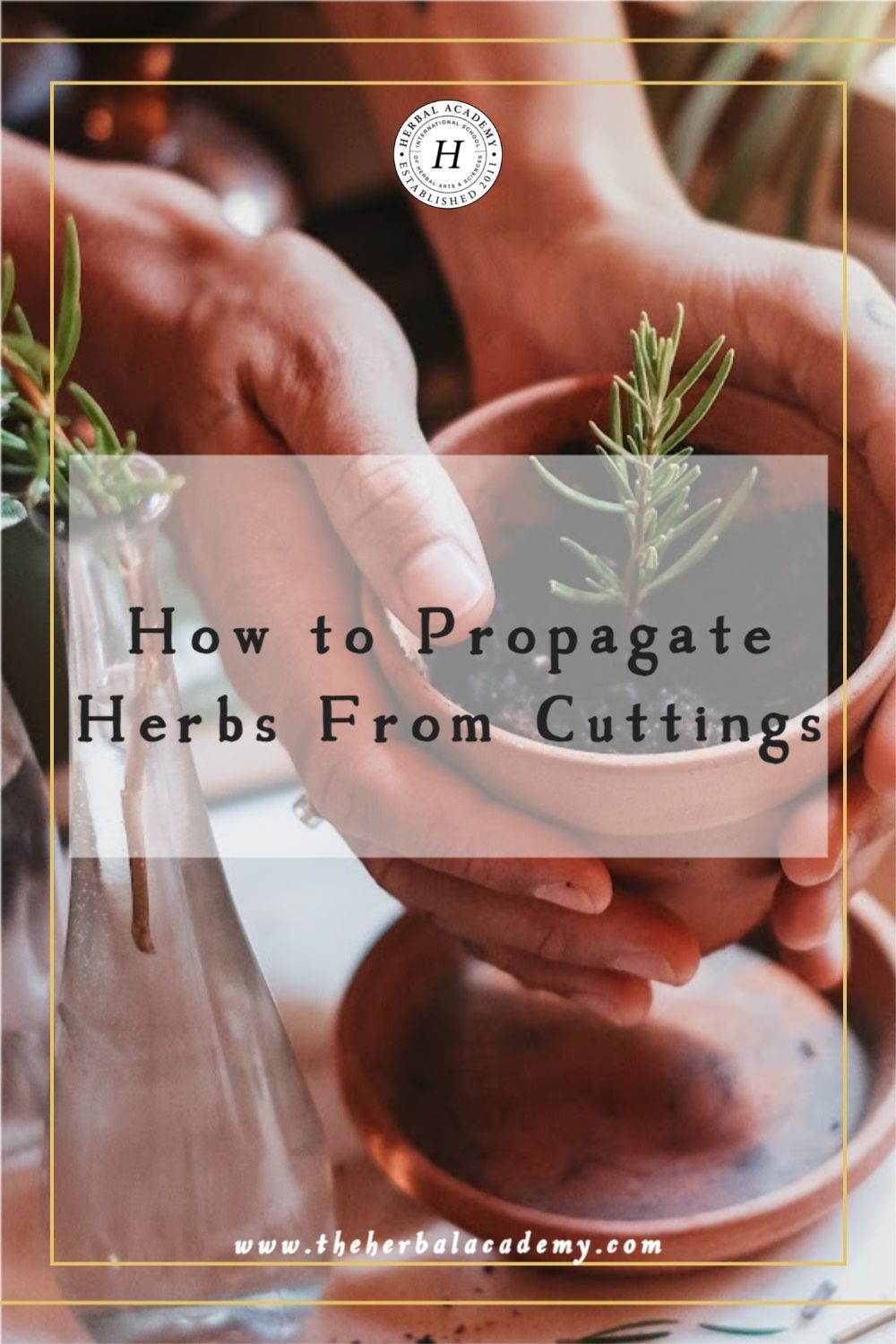
REFERENCES
McVicar, J. (2002). New Book of Herbs. Dorling Kindersley.
Titchmarsh, A. (1981). Gardening Techniques (3rd ed). Mitchell Beazley Publishers.








